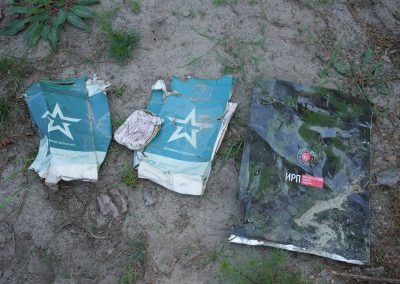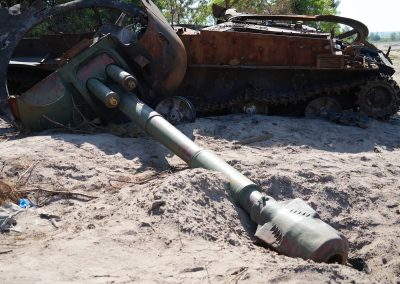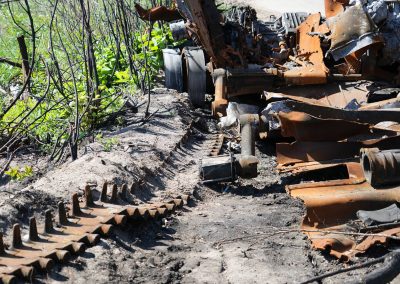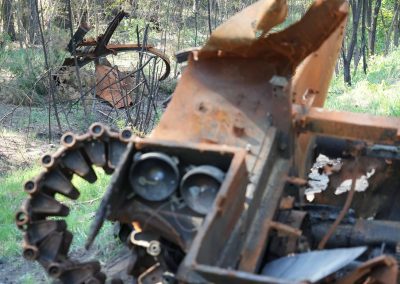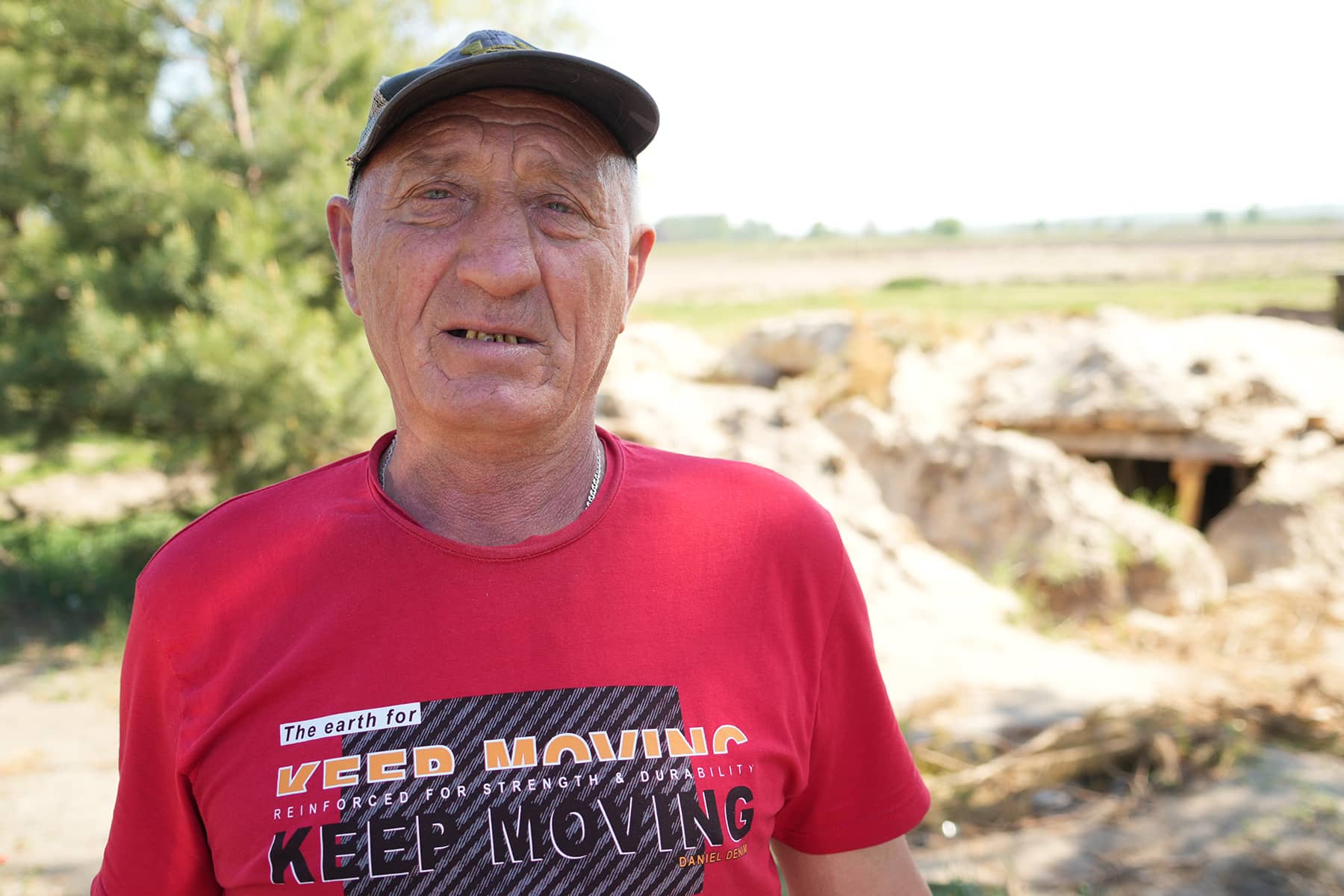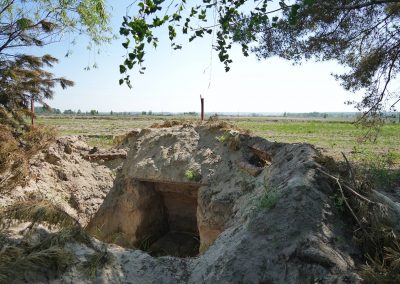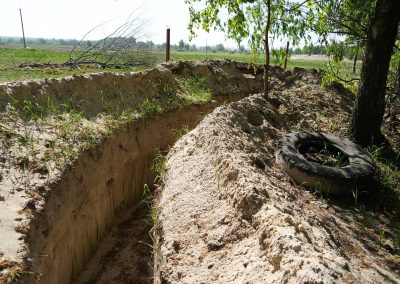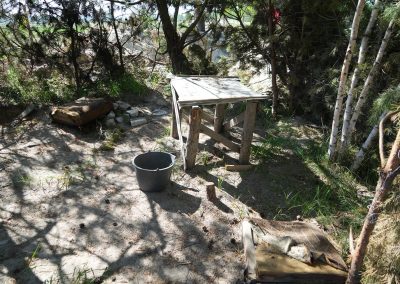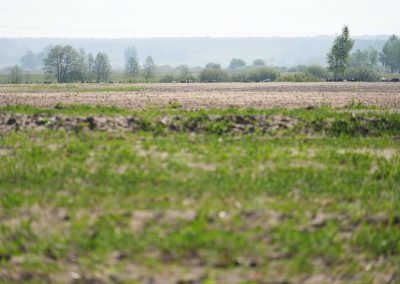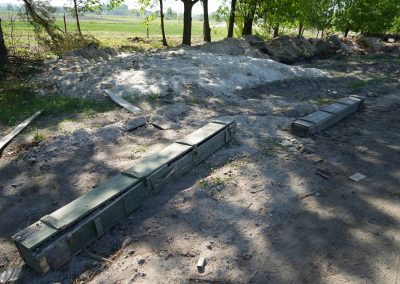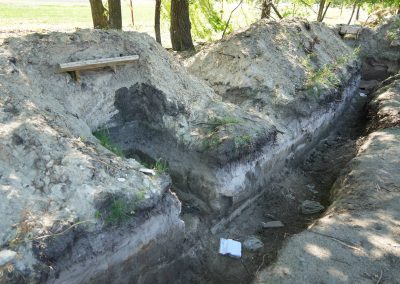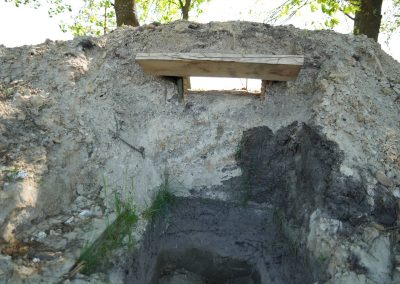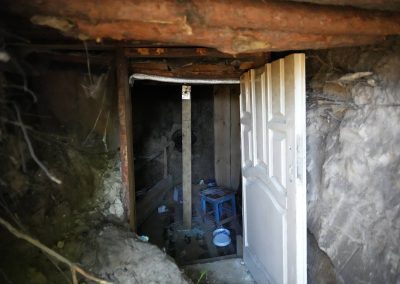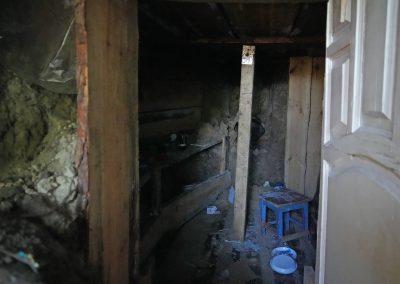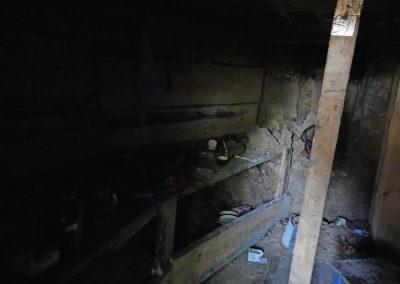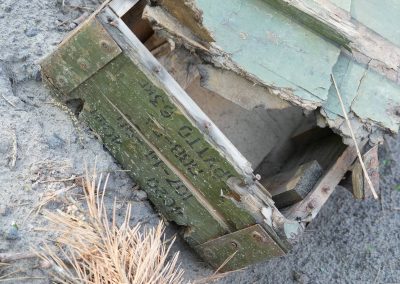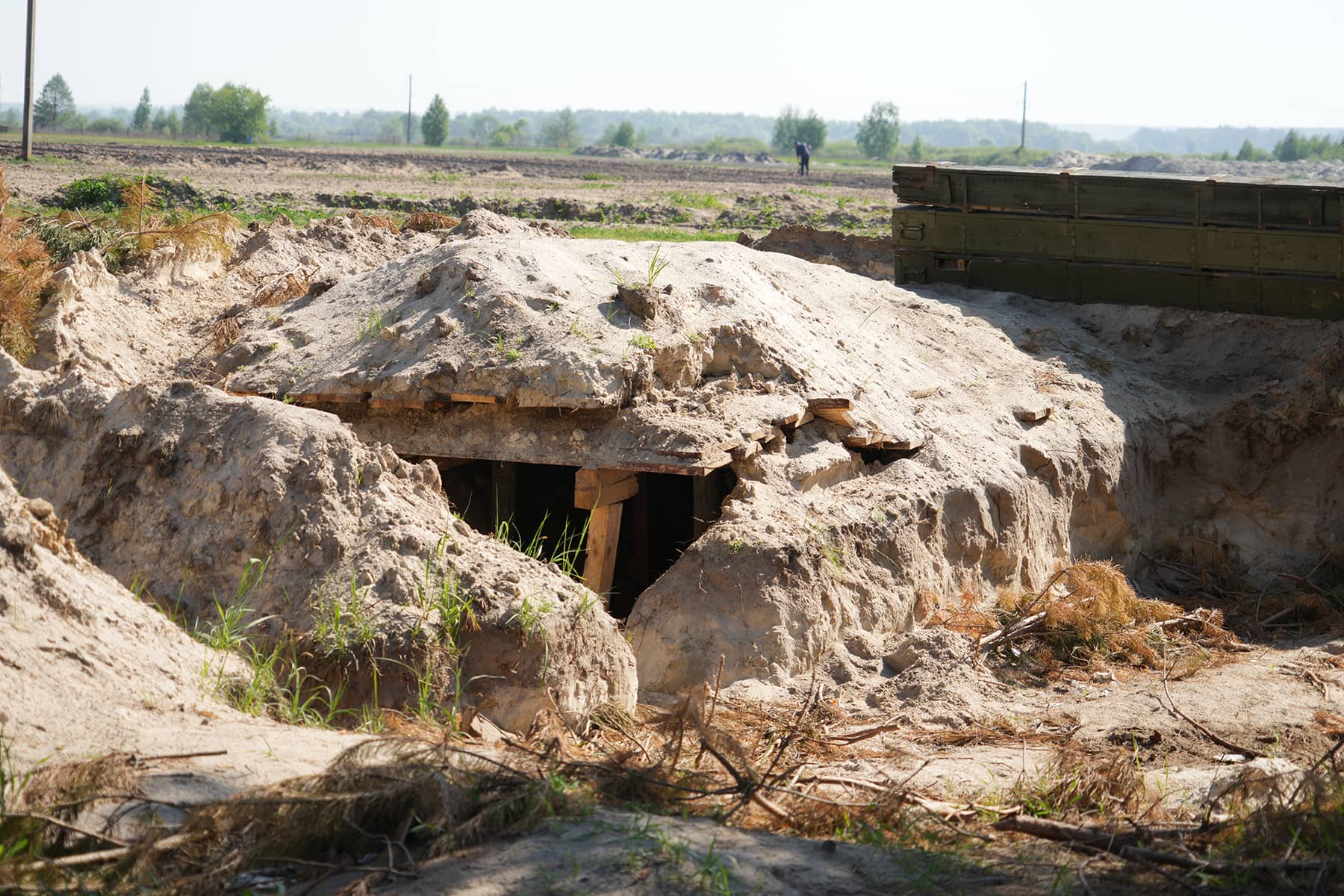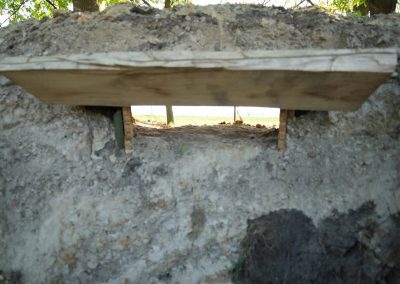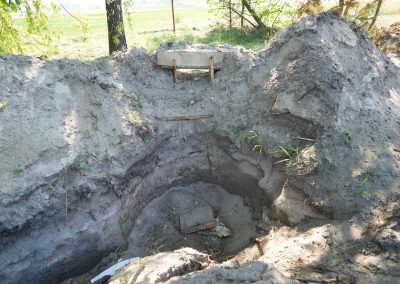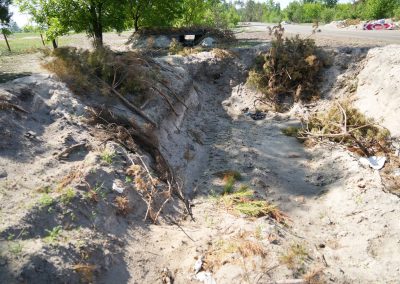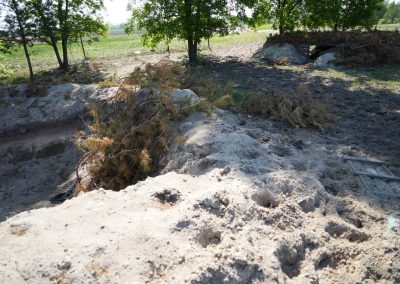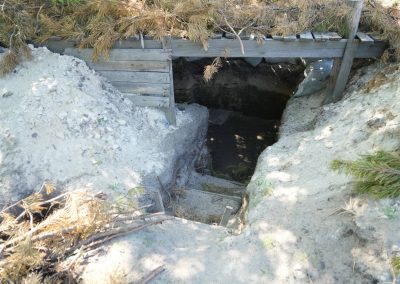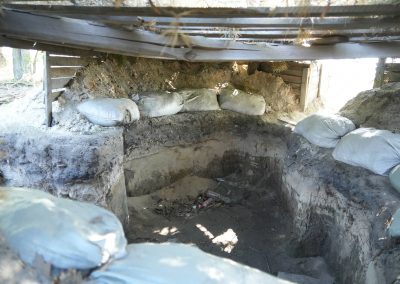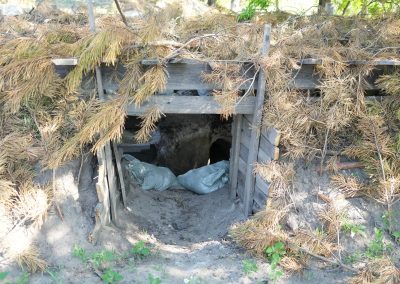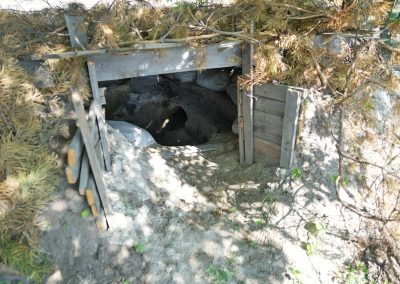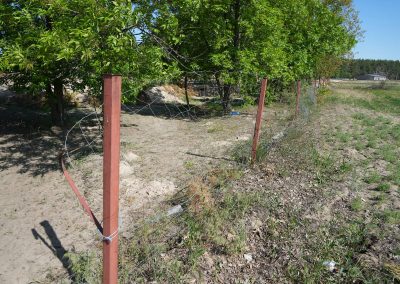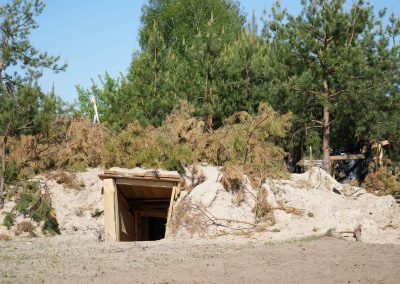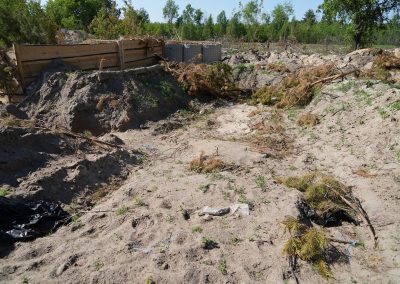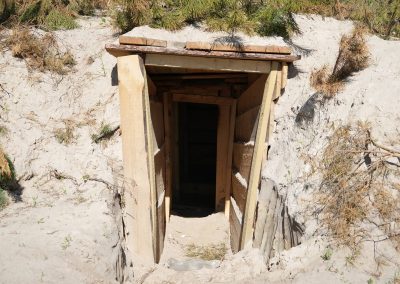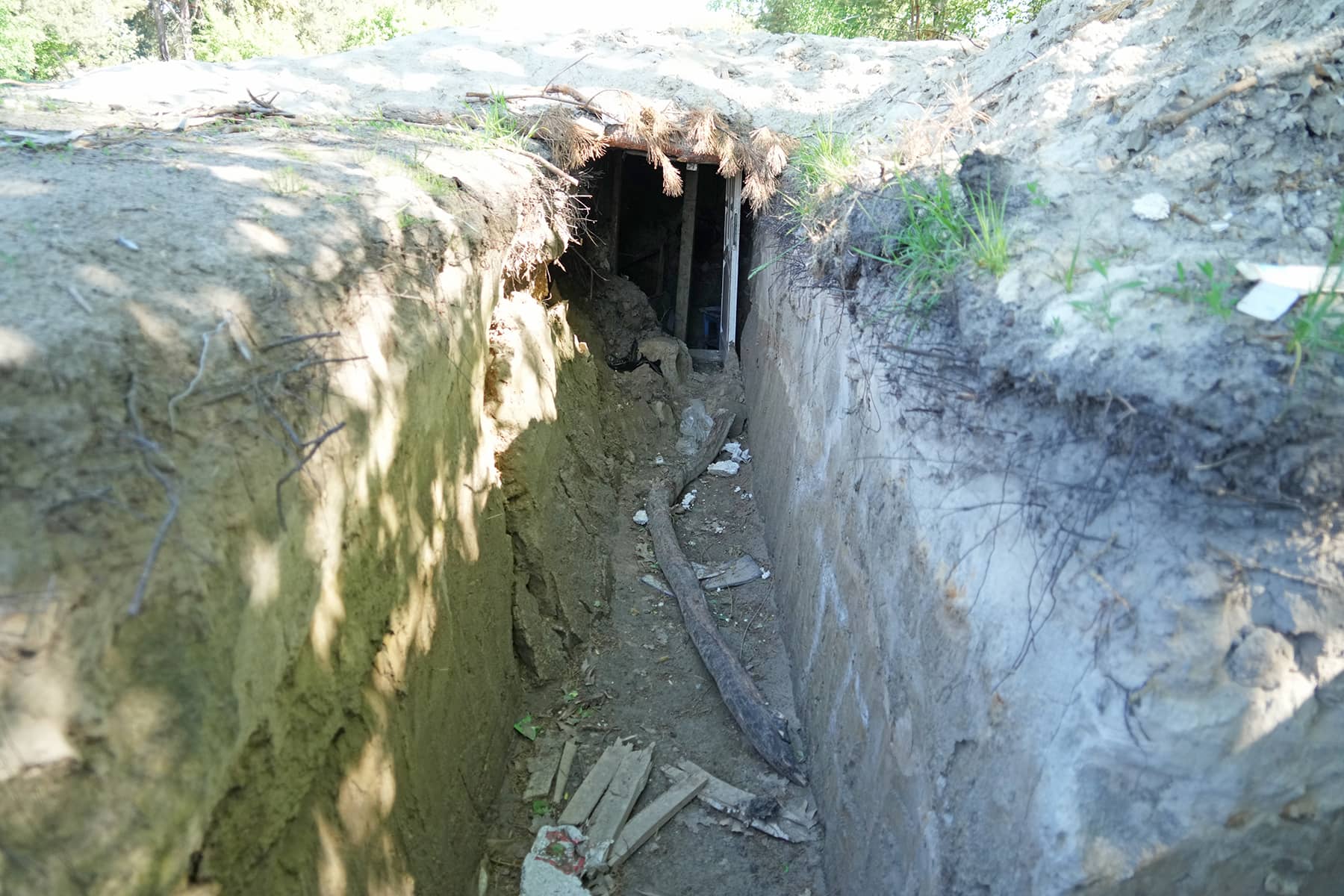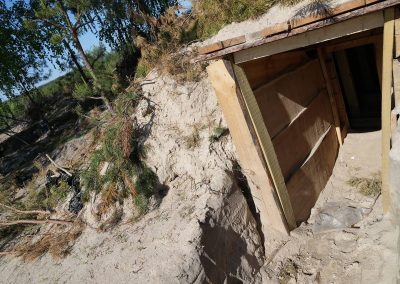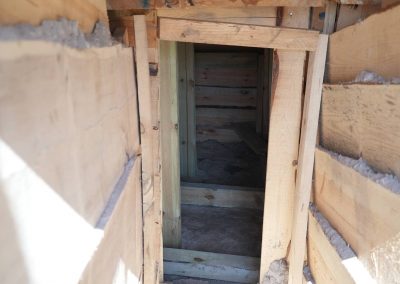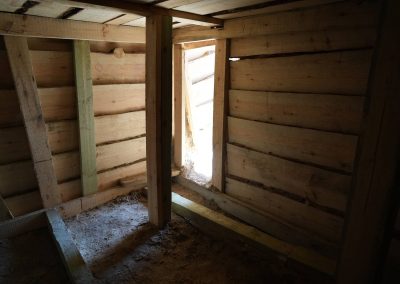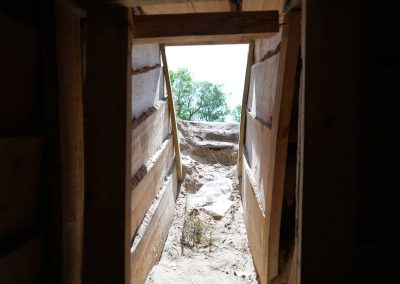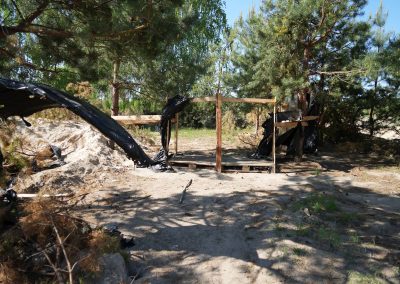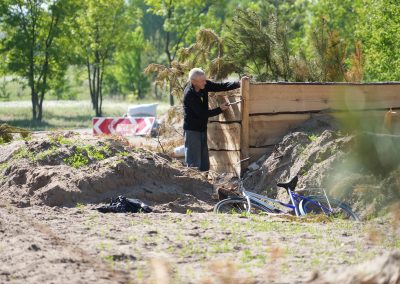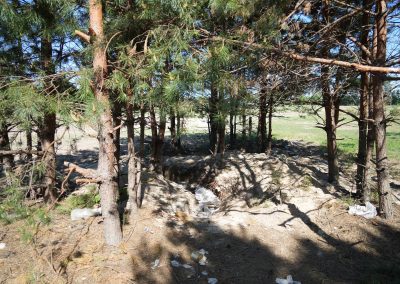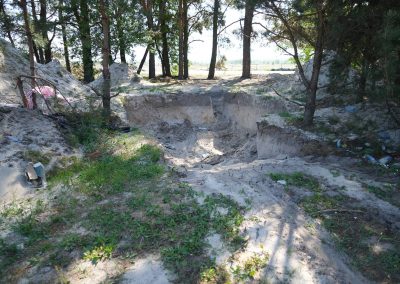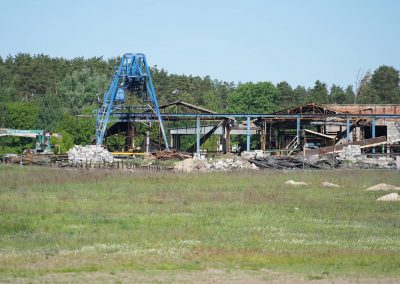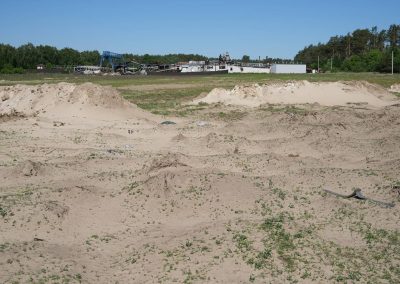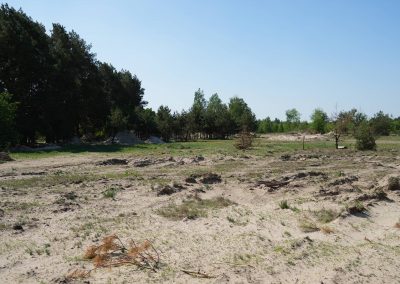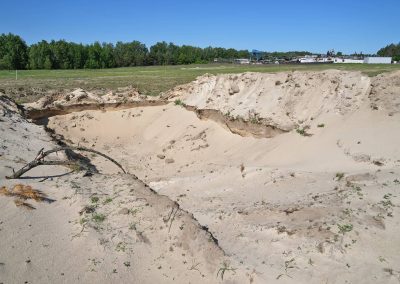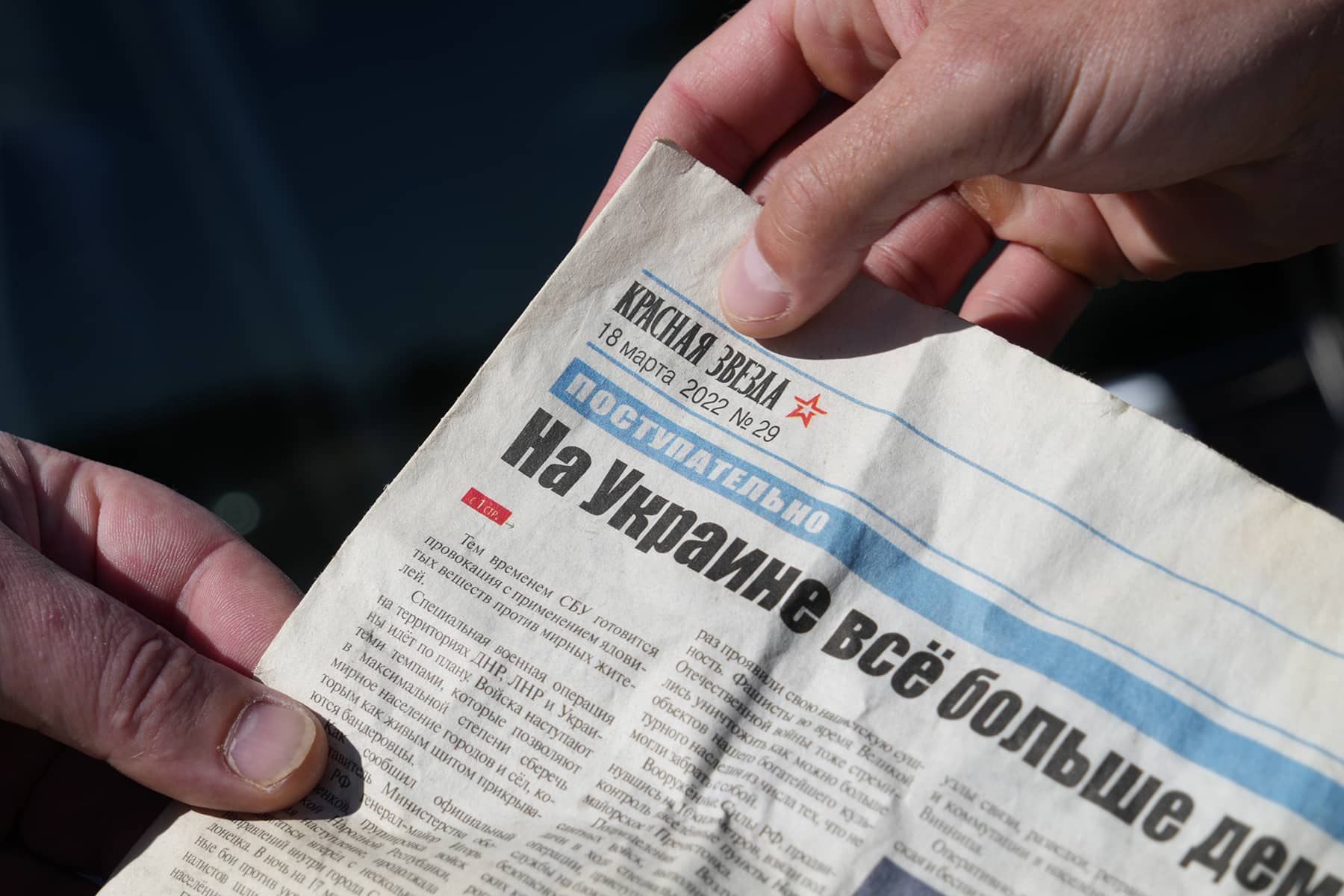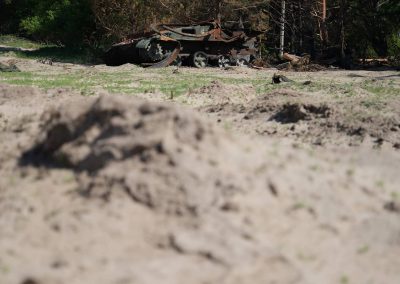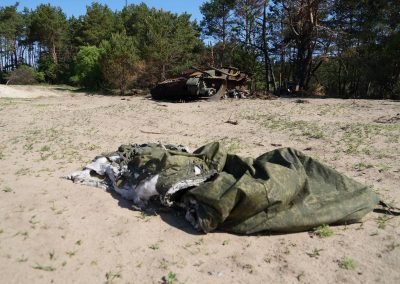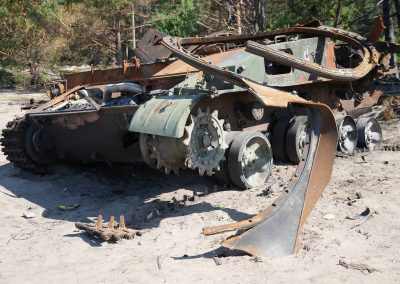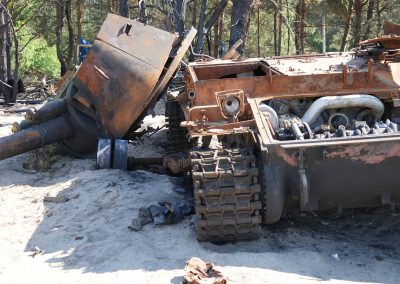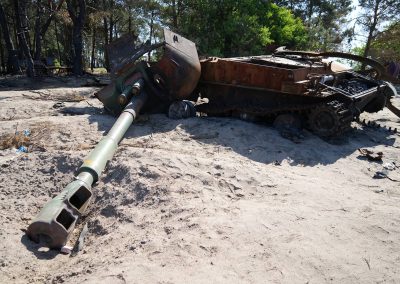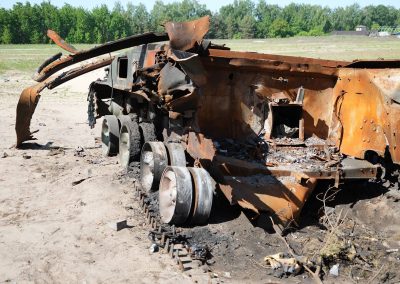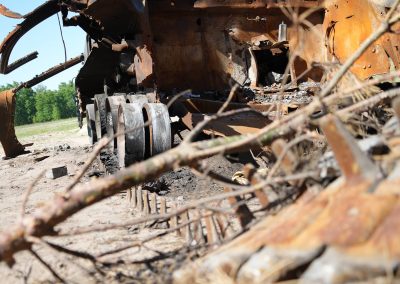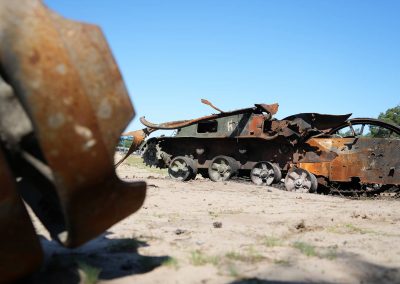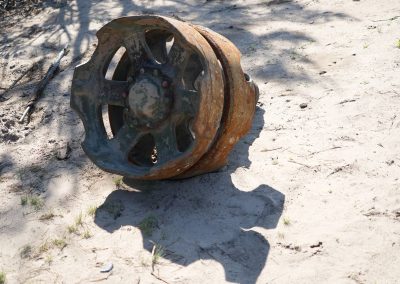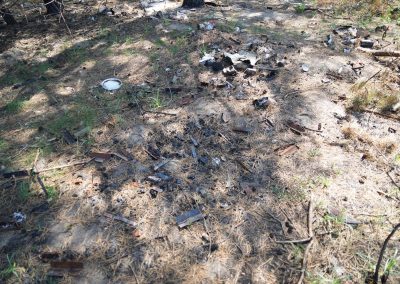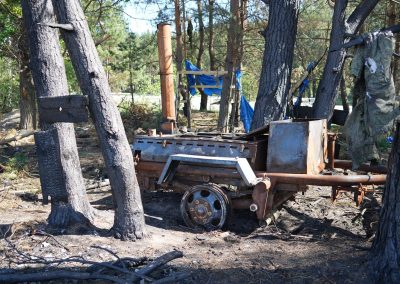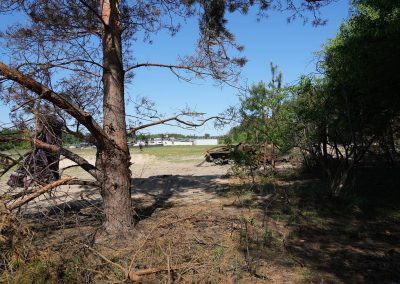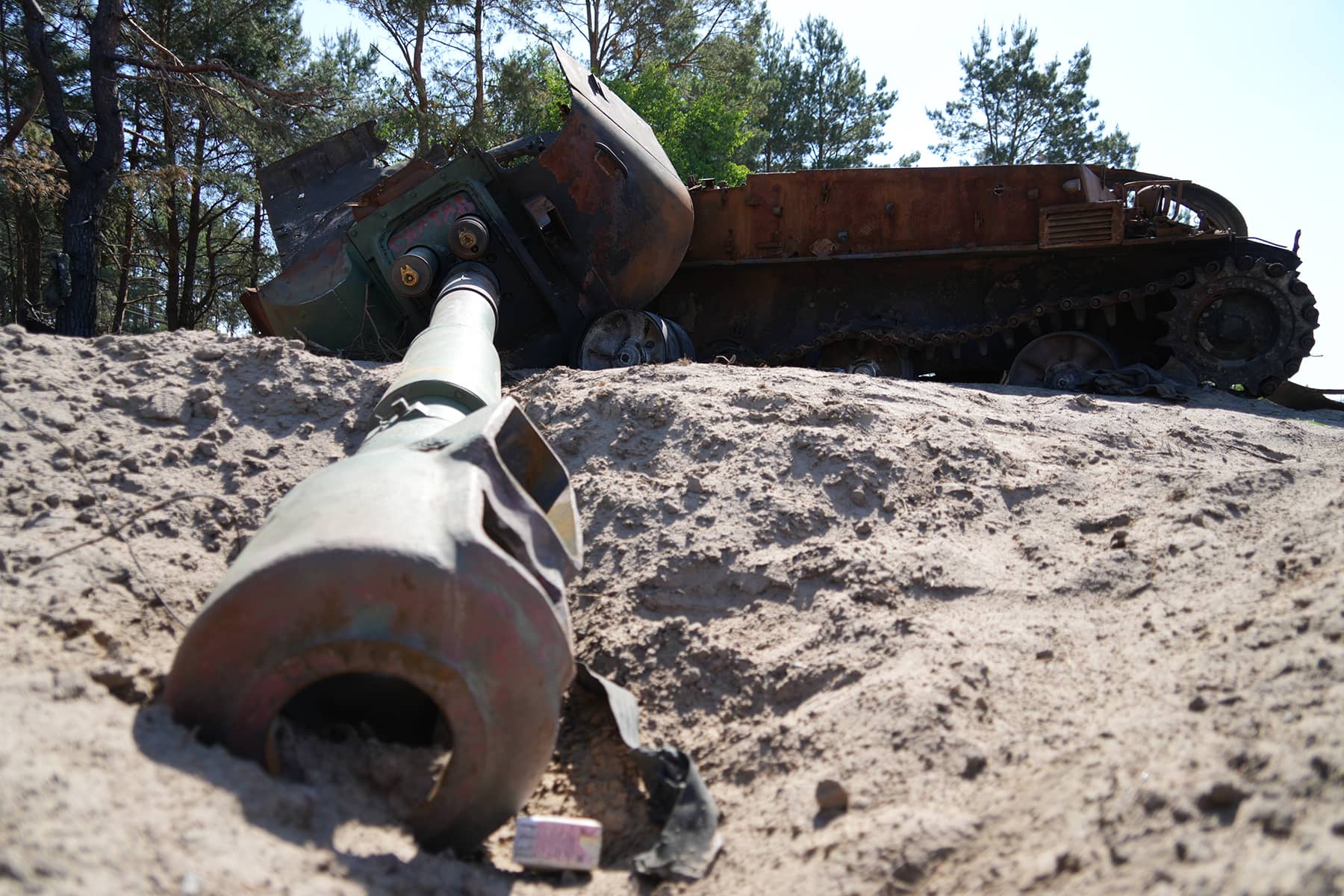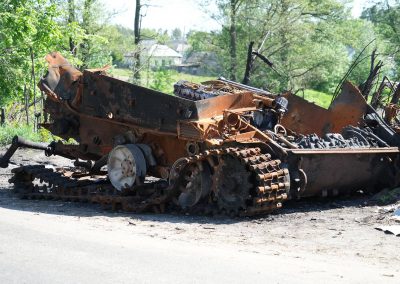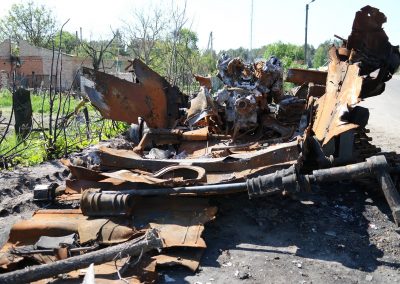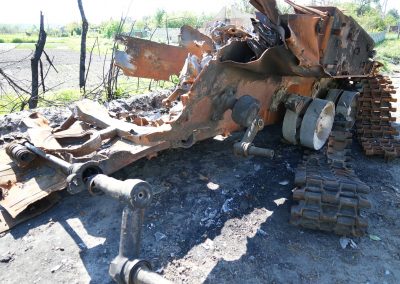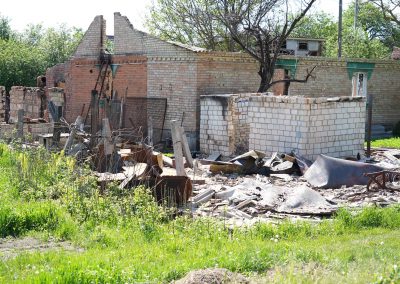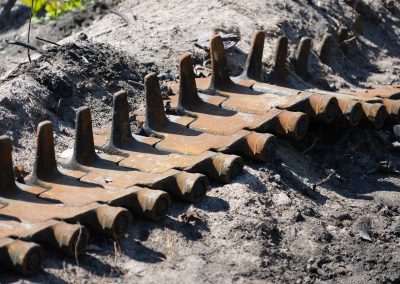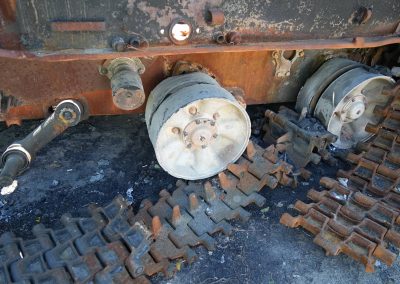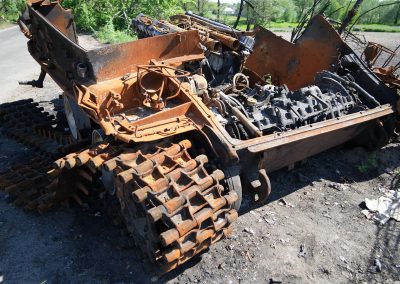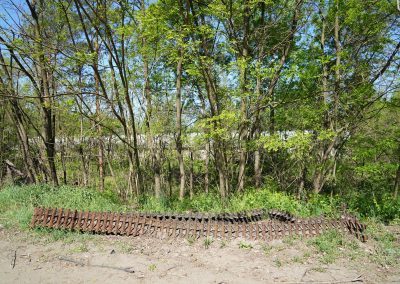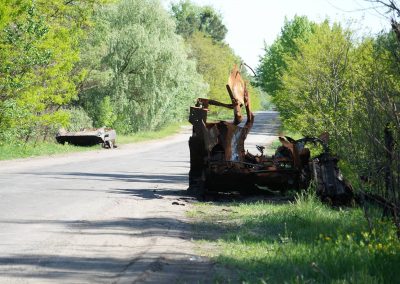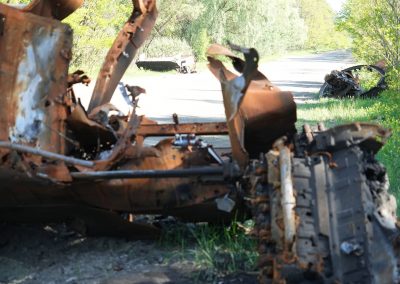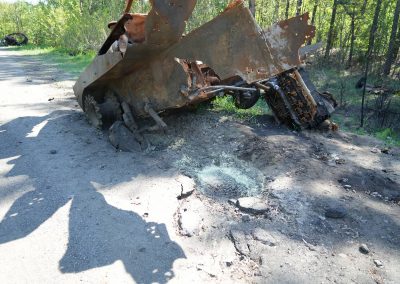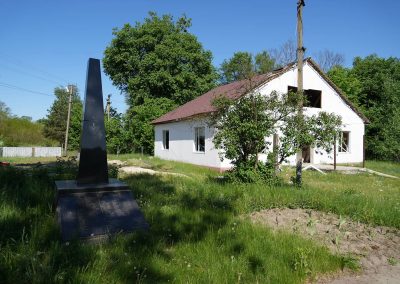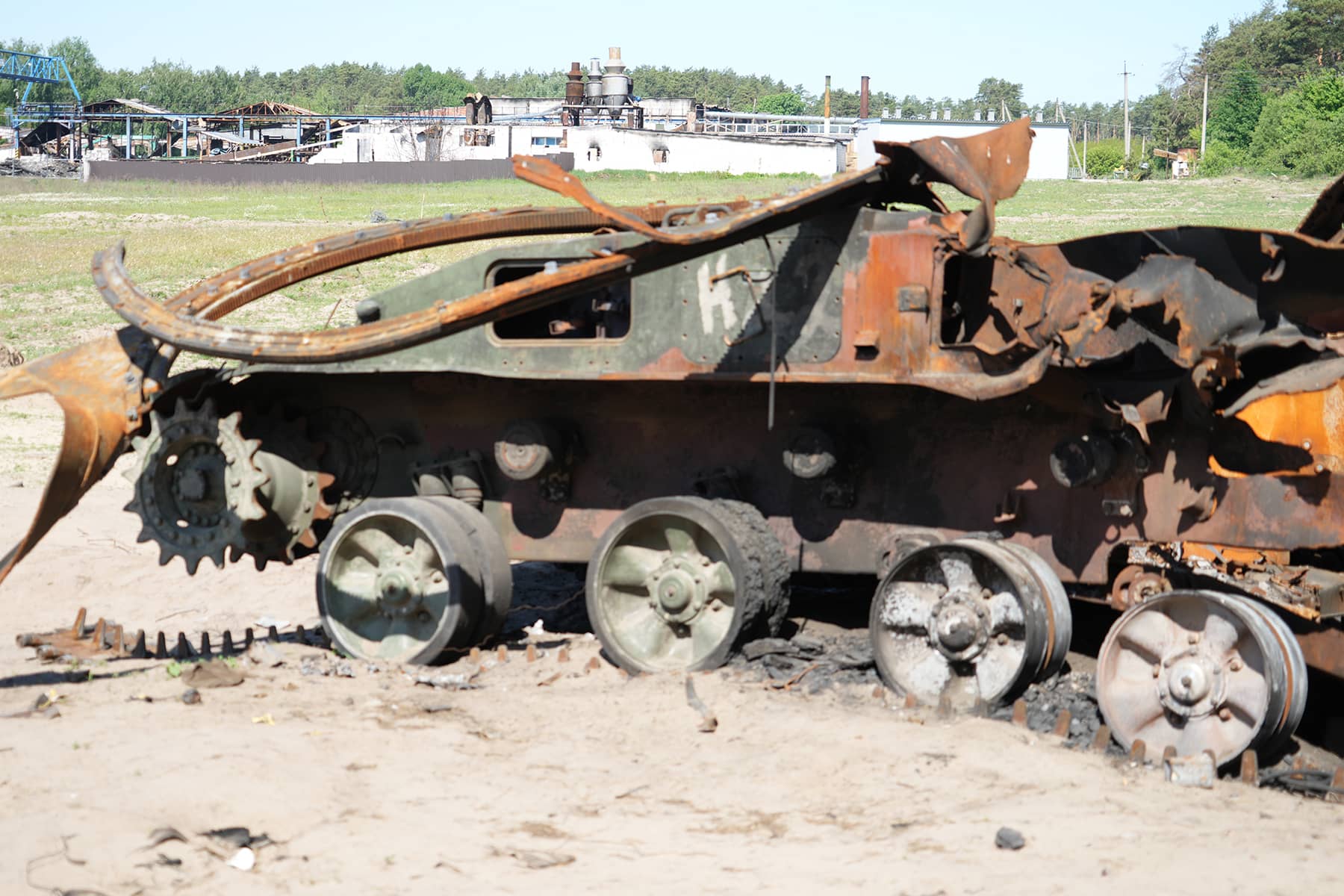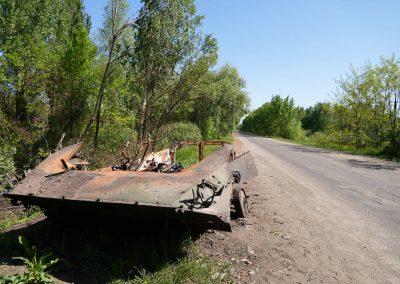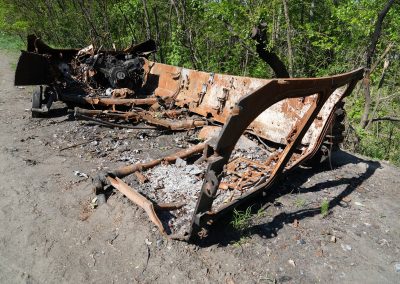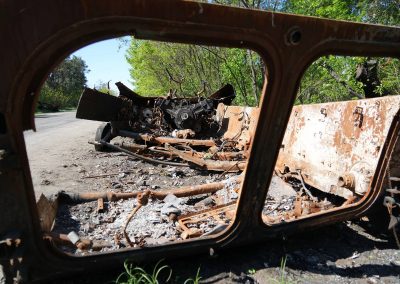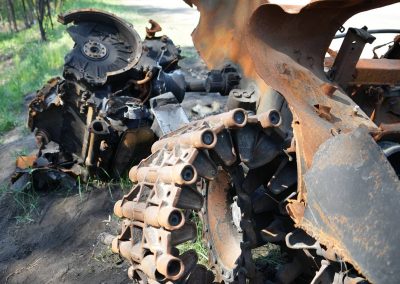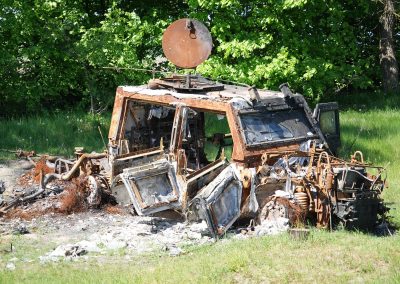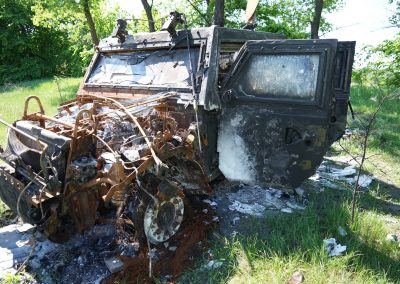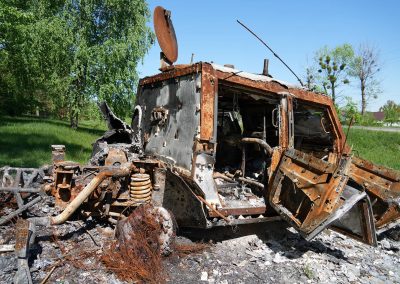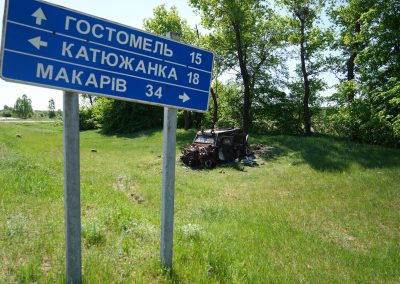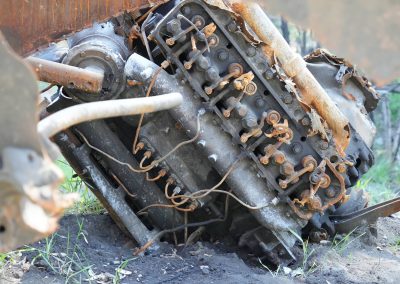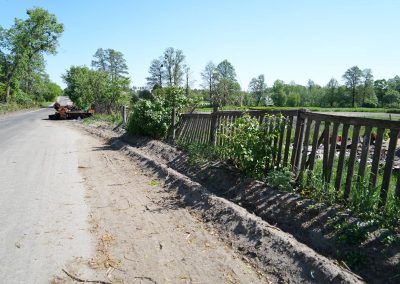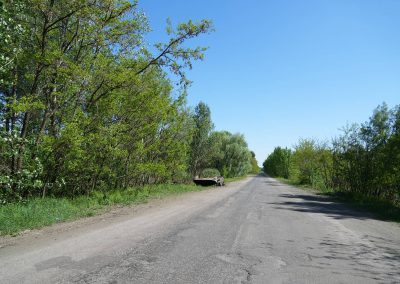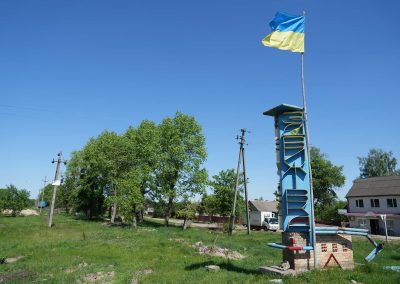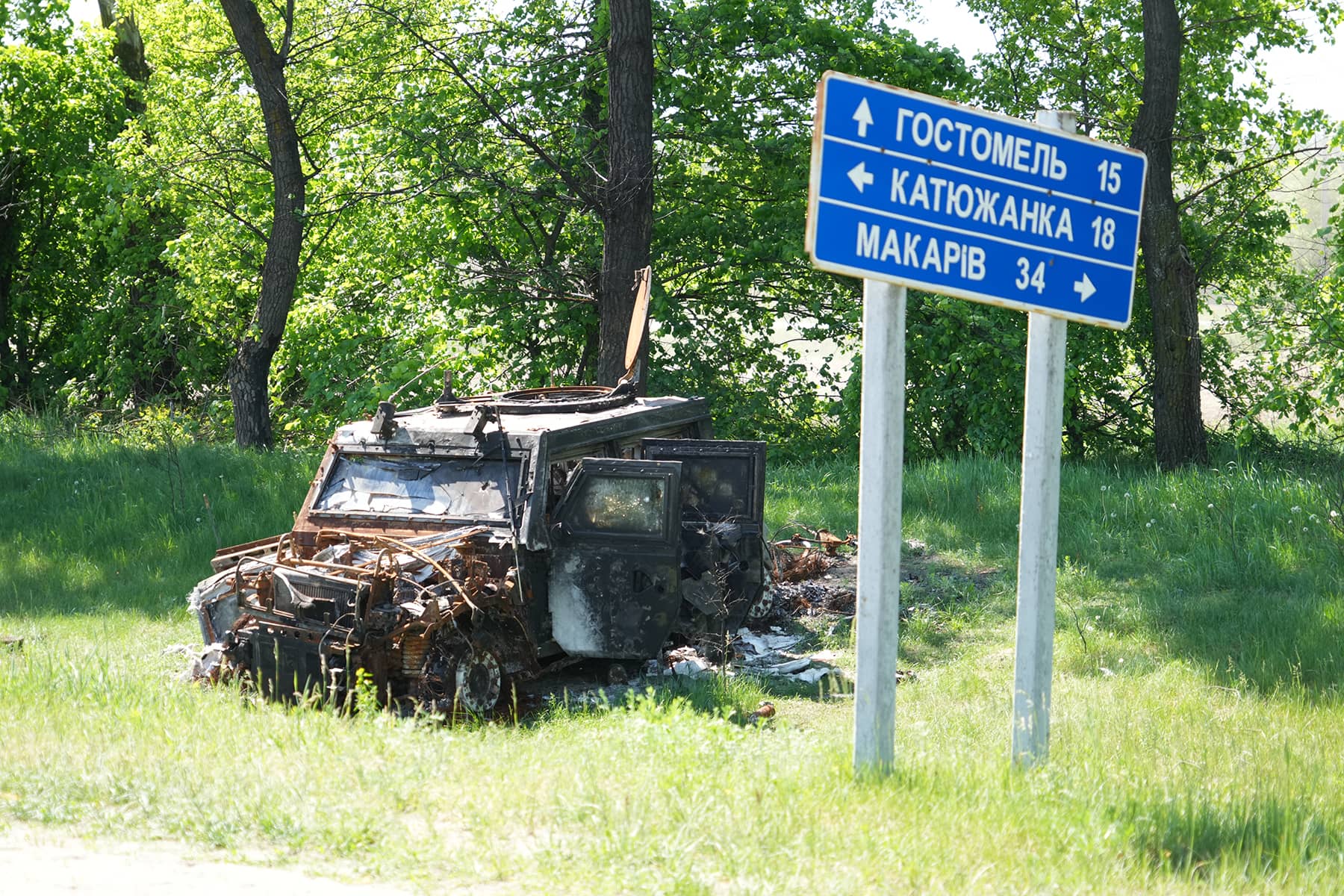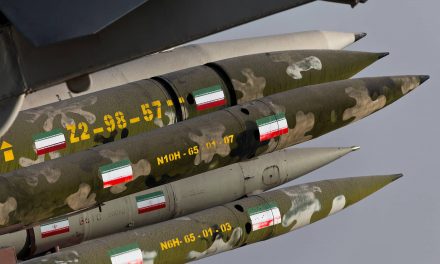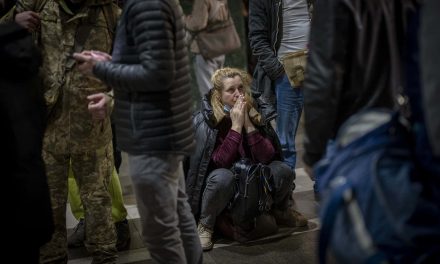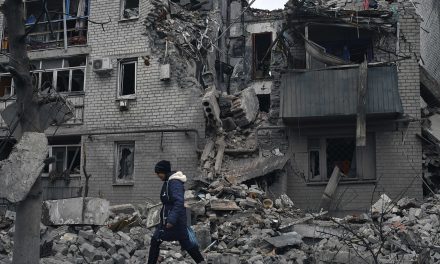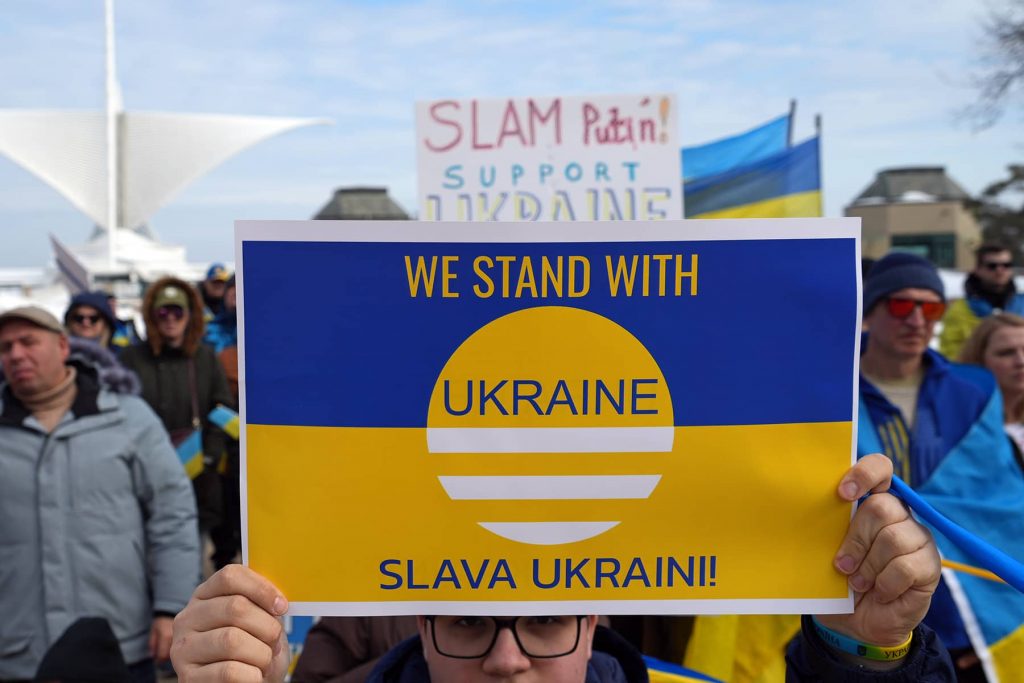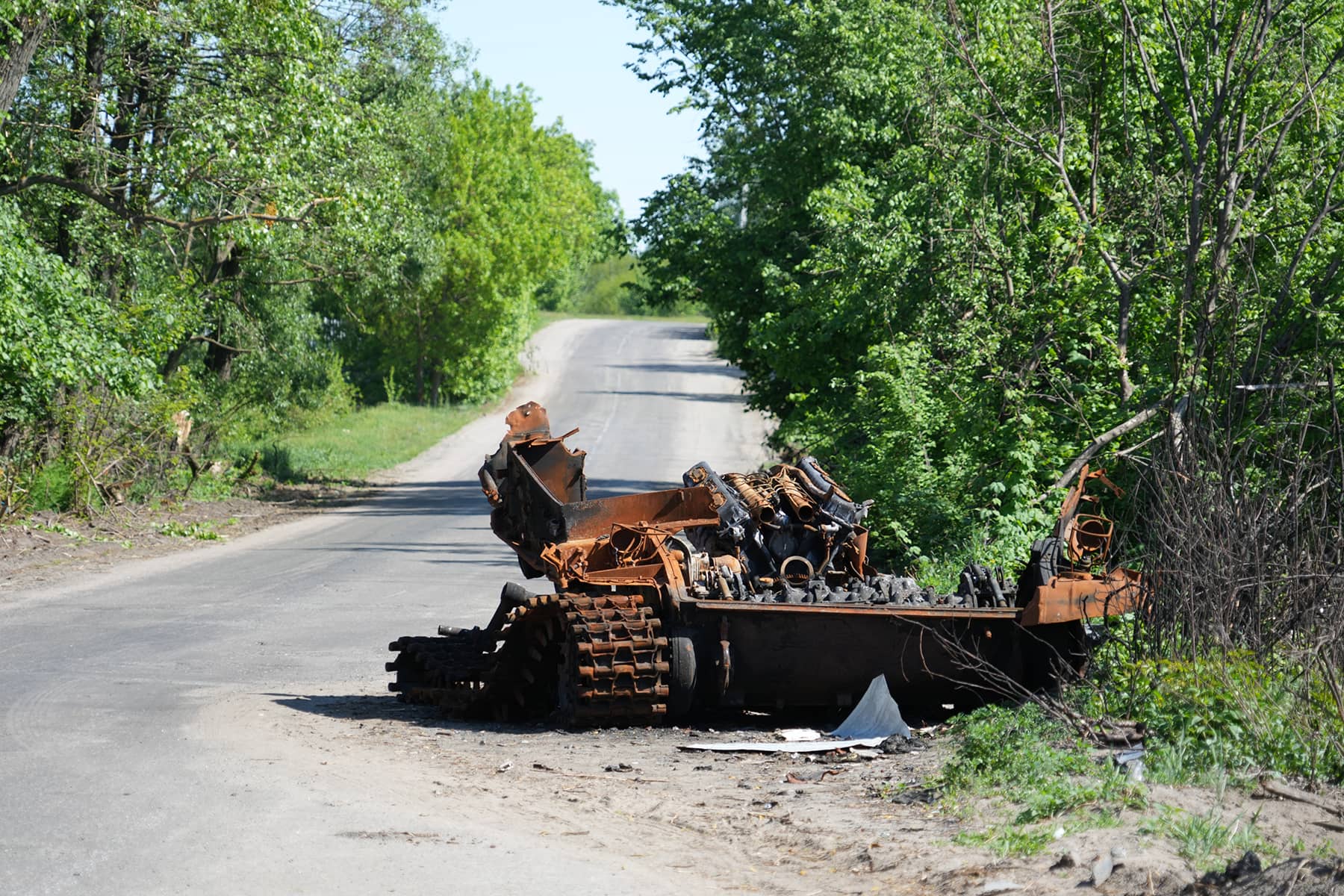
In the early days of March, the massive Russian convoy driving to Kyiv captivated the world’s attention. The 40-mile-long column of military and supply vehicles symbolized the overwhelming might of the Russian military. But it quickly turned out to be a fabricated illusion.
When Russia’s invasion of Ukraine began on February 24, troops poured across the border of Belarus, moving in a straight line to the capital city of Kyiv. Before long, reports came that the convoy stalled, and was suffering heavy losses against the smaller but strategically advanced Ukrainian Army.
For almost a month the column remained stuck, but not inactive. They inflicted as much damage as they were able from their positions on the surrounding civilian population. At several points along the road, the Russians established defensive camps to protect their over-stretched convoy.
The Milwaukee Independent team followed the column’s route and visited the abandoned Russian base at a field in Berestyanka. The sprawling forward position of trenches was dug among the tall pine trees, and littered with military garbage.
Earlier in the invasion, Ukrainian special forces believed that 6,000 marines had set up camp in the forest of pine. Over that month, there was considerable rain and snow, with temperatures dropping to around 10°F.
The site included a main command post with a headquarters. It was from that location and a nearby field that the Russian army launched attacks on Kyiv, Hostomel, and the nearby city of Bucha.
Only destroyed tanks remained, along with the footprints of where other armored vehicles had been positioned. But it was evident and with relief why the Russian military could not defeat Ukrainian forces. The construction and layout of the trench system, even the rudimentary building supplies used in their construction, gave away the lack of planning and basic military tactics that the Russian soldiers possessed.
In fact, and not a complete exaggeration, a troop of girl scouts could built a more successful defense. Thankfully, Putin had not sent girl scouts, just his military. That was enough to fail.
At the abandoned base we met Vasily, who moved to the area after the catastrophic Chornobyl disaster. He was around 27-years-old at the time, and was originally relocated to the village of Zalissia.
“When it all happened, I was working a night shift. We had three shifts. We saw the explosion that night. Nobody told us what happened so we continued to work for another four days and everyone was quiet,” said Vasily. “We didn’t know they were hiding information from us.”
After the evacuation, Vasily was taken by bus to the village of Kozyntsi. While they waited until all the buildings were constructed for them to move into, he worked on a collective farm. Around 640 houses were built.
Vasily said he knew many people who died, but he had not had health problems. He has not returned often to the Chornobyl area, because it requires a special permit to enter the zone. But when he does go he mostly visits the cemetery.
When the Russians invaded in February, Vasily stayed with his daughter and granddaughter. But soldiers were already in the area, telling everyone to wear white armbands.
“It was around March 17, we were walking through the fields and a car came to pick us up. I remember that in the morning, it had started to snow,” said Vasily. “Because their headquarters were right by my house, they knew my face since I would frequently get water from a neighbor.”
He said that the soldiers he saw were really young, and described them as “just kids.” They explained that they had come liberate the people, and that Ukraine’s president had fled to Poland.
“They were also asking where the activists of our village were, and I pretended to know nothing, saying I was an old man who didn’t know anything,” said Vasily.
Because the rural population was spread out, the Russians did not kill many people. But Vasily said he knew a few locals were shot, including two women. After the Russian forces retreated, Vasily said they saw a lot of humanitarian aid arrive. But in the weeks since it was a lot less. They were lucky to receive supplies once a week.
When we came across Vasily, he was taking a break from farming. He explained that before corn could be planted, explosive technicians had to investigate the fields to make sure they were safe to plow. He talked about pulling out a rocket with his tractor.
To reach the deserted camp, we drove about one hour north from Kyiv. The Russian military had pressed toward Ukraine’s capital city, seemingly oblivious that every movement was captured on civilian satellite imagery or TikTok.
Further up the road, the scattered wrecks of burnt Russian tanks remained. Some with turrets blown off at such a distance it was unimaginable what kind of explosive force would be required to propel something so heavy that distance.
The decomposing armored carcasses were the only evidence that the Russian column had passed through the area.
© PHOTO NOTE: All the original editorial images published here have been posted to the Facebook page of Milwaukee Independent. That collection of photos contains the MI copyright and watermark for attribution, and may be used for private social media sharing. Do not download and share images directly from this page. mkeind.com/facebook
Series: Reports from Ukraine
- Reports from Ukraine: Traveling from Milwaukee to a country at war just to take a vacation from America
- Images from Ukraine: Latino artist travels to Irpin to paint mural inspired by "Echoes of Guernica"
- Images from Ukraine: Irpin residents welcome reissue of Russian Warship Stamp as latest sign of victory
- Stories from Ukraine: Wandering in the ruins of a shattered life after surviving Russia's invasion
- Images from Ukraine: Similar to the Alamo, martyred cities bought precious time to save a nation
- Stories from Ukraine: Tent camp offers shelter for displaced residents until Irpin can rebuild lost homes
- Images from Ukraine: Graveyards of Russian war machines show the scale of Putin's failure to seize Kyiv
- Images from Ukraine: Following the invasion convoy's 40-mile route and exploring an abandoned base
- Stories from Ukraine: Illegal weapons and proof of Russian War Crimes easily seen along streets of Irpin
- Images from Ukraine: How Irpin’s cemetery processed the staggering massacre of its local citizens
- Stories from Ukraine: Healing remains slow as Borodyanka residents recover from occupation
- Images from Ukraine: The deep scars of war remain visibly etched across the landscape of Borodyanka
- Interview with Oleksandr Markushin: Mayor of Irpin and the hero of a Hero City
- A Meeting of Sister Cities: Former and current Mayors of Irpin ask Milwaukee's business community for help
- Stories from Ukraine: Having a shared purpose helped Irpin's leaders protect the city and stop the invaders
- Stories from Ukraine: How Milwaukee helped a bakery feed hungry survivors in Bucha with fresh bread
- Stories from Ukraine: Bucha resident recalls how Russians turned neighborhood into a street of death
- Stories from Ukraine: How a mass grave of executions overshadowed accountability from Bucha’s leadership
- Images from Ukraine: Putin’s attack on Babyn Yar is a painful reminder of the broken vow of “Never Again”
- Images from Ukraine: An unexpected encounter with Jewish history and the bloody legacy of persecution
- Images from Ukraine: Listening to timeless voices of ethnic heritage etched in stone at Lychakiv Cemetery
- Images from Ukraine: The experience of attending a military funeral in Kyiv while children died in Uvalde
- Images from Ukraine: Stepping out of the fog of war to see the beauty of faith in ancient places of worship
- Images from Ukraine: The cities of Kyiv and Lviv were divided by history but remain united in identity
- Stories from Ukraine: Anya Nakonechna shares why the Lviv Opera is a symbol of her nation’s culture
- Images from Ukraine: A folk village where visitors can experience the life of past generations
- Images from Ukraine: Signs of renewal sprout from under Irpin’s rubble as city looks to the future
Oleh Pinta
Oleh Pinta and Halyna Salapata
Lее Mаtz
Lее Mаtz and Yaroslav Zdyrko
Milwaukee Independent editorial team for this special series: (UKRAINE) Lee Matz, photojournalist; Oleh Pinta, translator / reporter; Yaroslav Zdyrko, security / videographer; (MILWAUKEE) Halyna Salapata, logistics / translations.
Milwaukee Independent has reported on the situation in Ukraine since it was invaded on February 24. Coverage originally began with reactions and rallies from the local Ukrainian American community, and relationships with Milwaukee’s sister city of Irpin. Through partnerships and good journalism, sources were developed that enabled Milwaukee Independent to publish developments about the unprovoked war in realtime. In late May, a team from Milwaukee Independent spent nearly two weeks on the ground in Ukraine. The award-winning daily news magazine was the first and, at the time, only media organization to send staff into the country since the war began.
Reports from Ukraine: An extensive news series by Milwaukee Independent from a country at war

